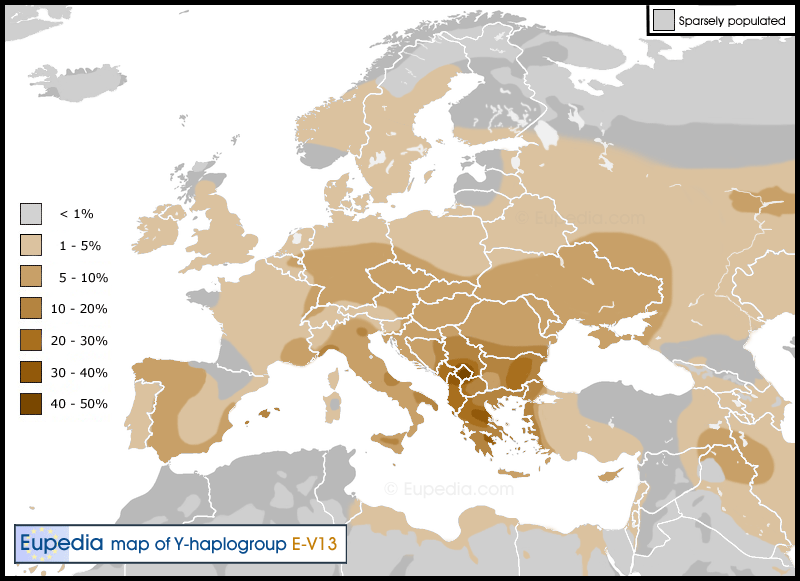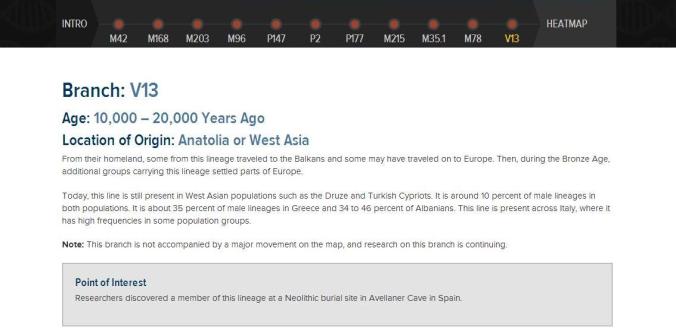Angela
Elite member
- Messages
- 21,823
- Reaction score
- 12,329
- Points
- 113
- Ethnic group
- Italian
All these studies point to G haplogroup males being in Europe a long time before E1b1b's and others showed up. The E1b1b skeleton was found among G haplogroup males. G's were the majority.
For all we know this E1b1b male was a refugee or someone who migrated from North Africa after Eurasians had already established settlements in North Africa. Could have arrived there via a trade route, caravan.
Oh, for goodness sakes, I've never heard such special pleading. You think it's a coincidence that there are all those hot spots of E-V13 in and around Greece and the Balkans?

We also have an E-V13 in Avellaner Cave in northeast Spain (Catalonia) in a Neolithic setting from 5,000 BC.
Marie Lacan et al from 2011:
http://www.pnas.org/content/108/45/18255.full
E-V13 and J2 were part of the Neolithic farmer migrations, ok? We don't know if M78, for example, reached Europe in the Mesolithic. It's possible, as it's probably old enough. We just don't know. We have an absolute dearth of Mesolithic and even Neolithic samples from southern Italy, Greece, the islands, etc.
In the latest phylogeny of "E", Trombetta and Cruciani et al , before these dna results were even released, hypothesized specifically that the E-V13 mutation took place in Europe.
http://gbe.oxfordjournals.org/content/early/2015/06/23/gbe.evv118.full.pdf+html
This is their estimate of it's TMRCA
I'd say that's about spot on.
It also had to be pointed out to you that one of the tested Pharaoh mummies, that of Ramses III, was indeed "E"; in fact he was E1b1a.
I think you have some reading to do before you start arguing your points so vehemently and arrogantly.


